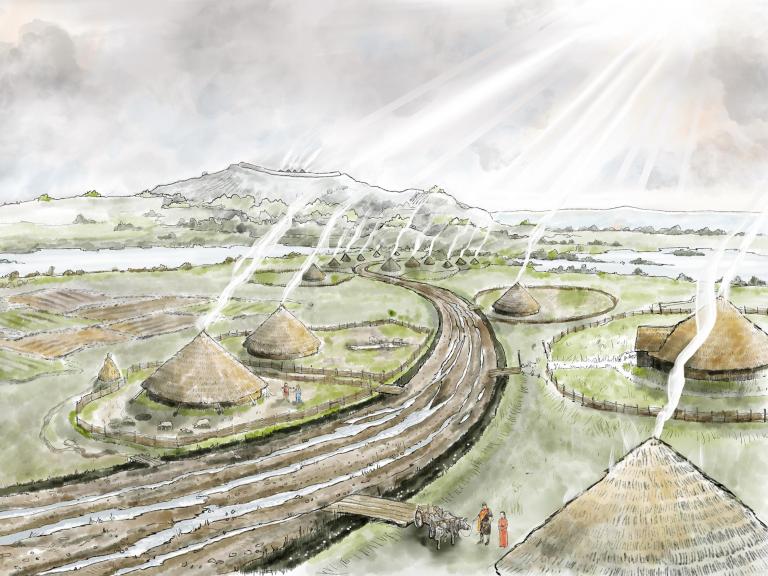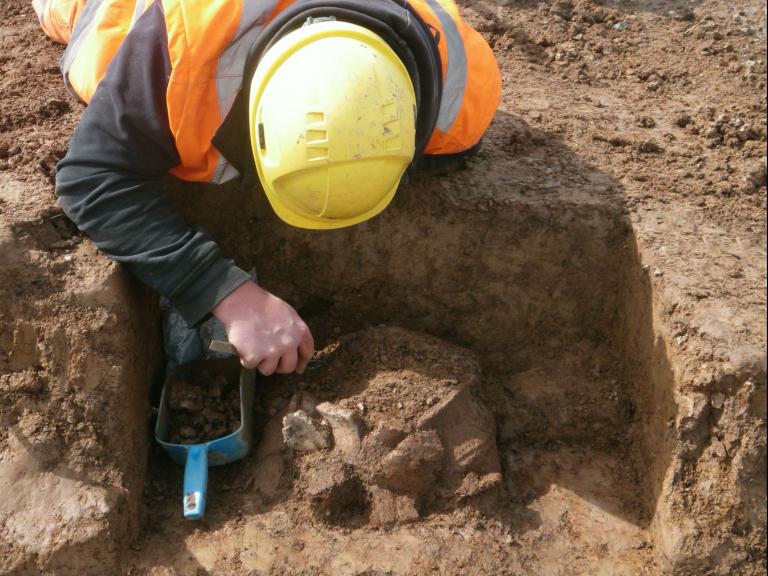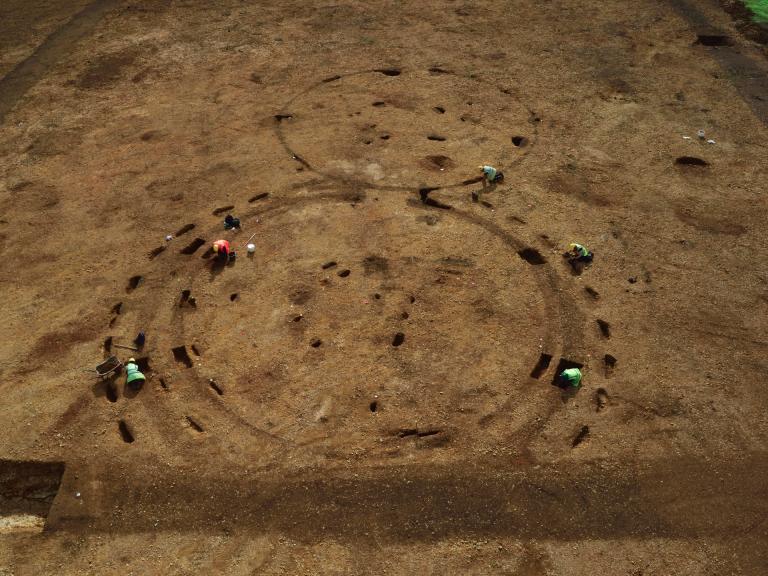51.3491996, -1.9927105
Wessex Archaeology was commissioned by RPS Consulting Services Ltd on behalf of Barratt David Wilson Homes to undertake a large-scale excavation as part of a planning condition for a housing development at Bitham Park, Westbury, Wiltshire.
The excavation revealed some spectacular archaeology, which showed that the site had been in use by communities for thousands of years. Evidence from the Bronze Age was particularly rich, with a field system, ring ditch and a unique ‘palisaded’ site around a central roundhouse. By analysing the archaeological remains, our experts have built up a picture of a small, related community living alongside an intriguing palisaded site.
A series of trackways was established in the Romano-British period, the layout of which appeared to have influenced the organisation of subsequent medieval and post-medieval field systems.
Above: Drone image of site, Thomson Ecology
Early/Middle Bronze Age: Ring ditch and field systems
The earliest feature on the site was a small ring ditch. The ditch contained 45 sherds of Late Bronze Age prehistoric pottery, small quantities of struck flint, animal bone and burnt flint. Ditches forming elements of a possibly Middle Bronze Age field system lay close to the ring ditch.
While the date of the ring ditch could not be conclusively determined, its form and possible associations with the field system suggest that it was probably of Early or Middle Bronze Age date.
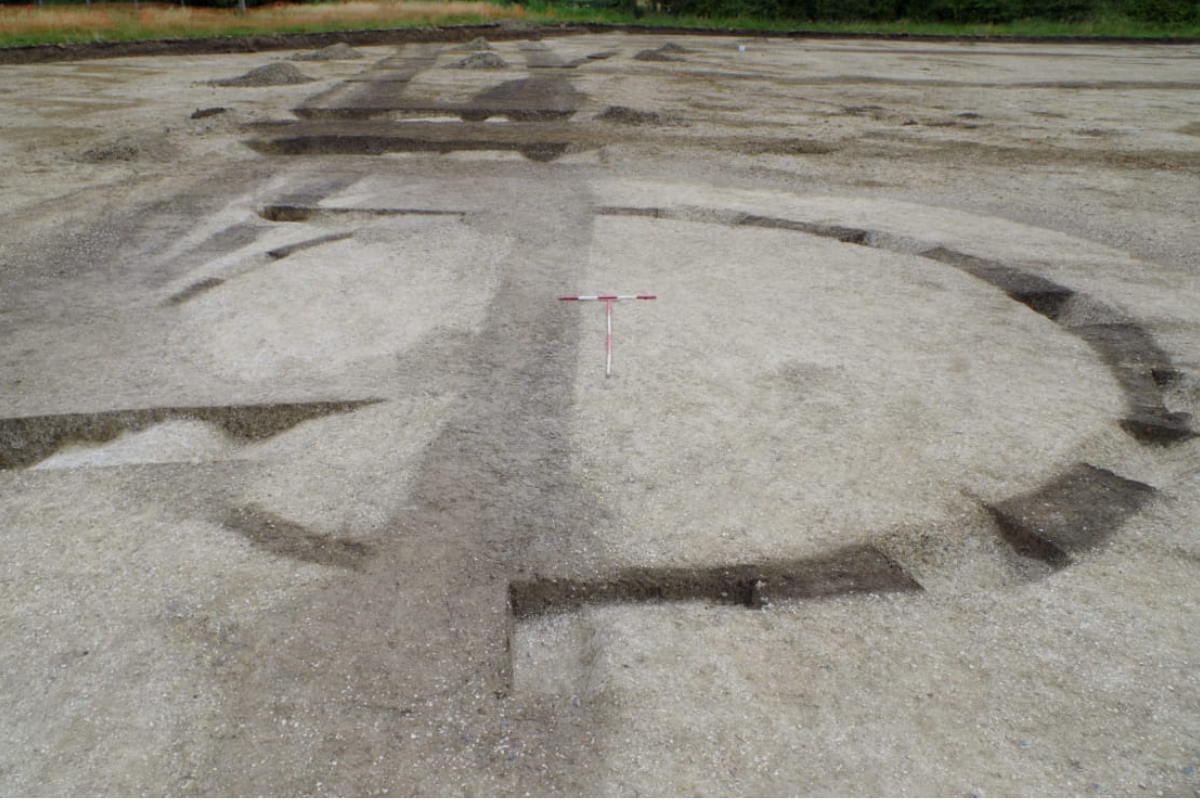
Late Bronze Age: A unique palisaded site
The most notable results of the excavation were from the Late Bronze Age, during which a series of concentric ‘palisades’ (a fence or defensive wall) were constructed around a centrally located roundhouse.
Their form and structure are very unusual and raise some interesting questions for our experts: what was the status and function of the site? Was it used for domestic occupation, or some other, less commonplace role?
We know that the construction of the palisades was not random; the innermost palisade is circular, mirroring the form of the roundhouse and suggesting that they may have had some sort of symbolic relationship. The outer palisades were open-ended, semi-elliptical in plan and enclosed a larger area.
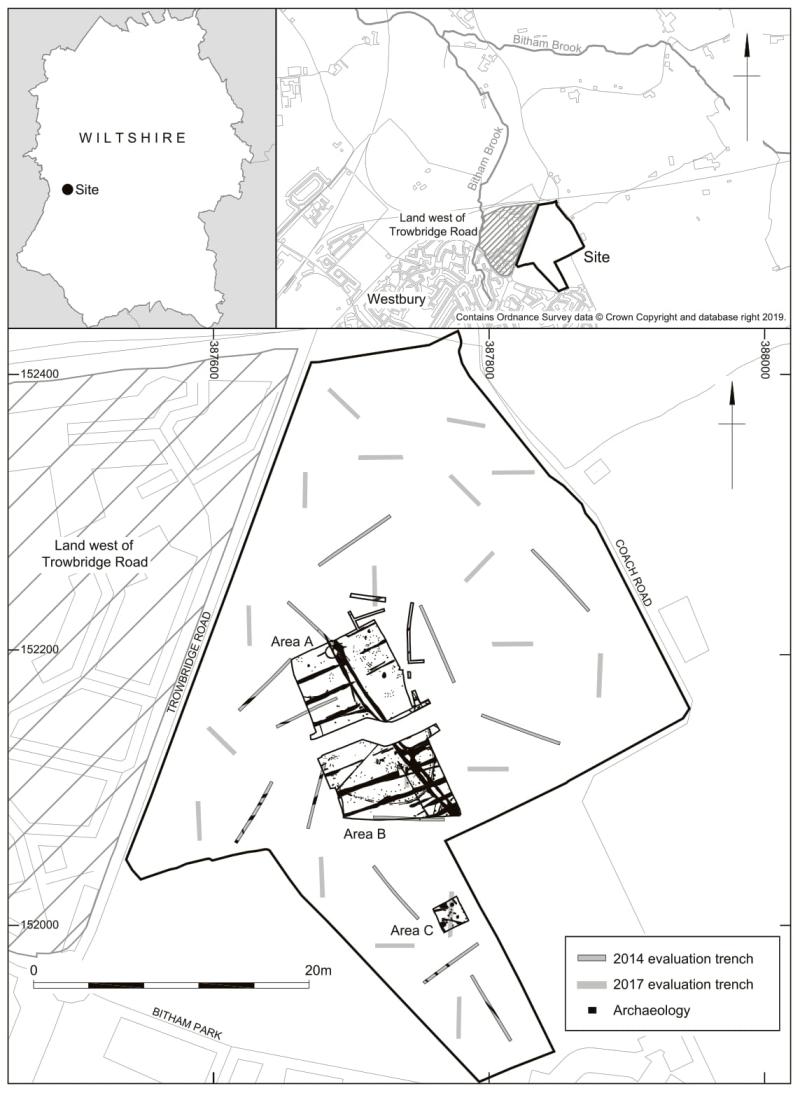
Above: Map of site
It’s an intriguing site, which is still being studied, but already contributes to our understanding of the level, distribution and character of activity in the local area during the Late Bronze Age and serves to illustrate the increasing diversity of site morphologies during the period.
Approximately 80m north of the roundhouse, we also uncovered the remains of at least two roundhouses and several small square and rectangular structures built using posts. Several pits, postholes and wells were also associated with the area of occupation.
The remains of this settlement suggests that there was a small community – such as an extended family group – occupying the site, and that they did so over a longer period of time and to a greater intensity than at the neighbouring palisaded site.
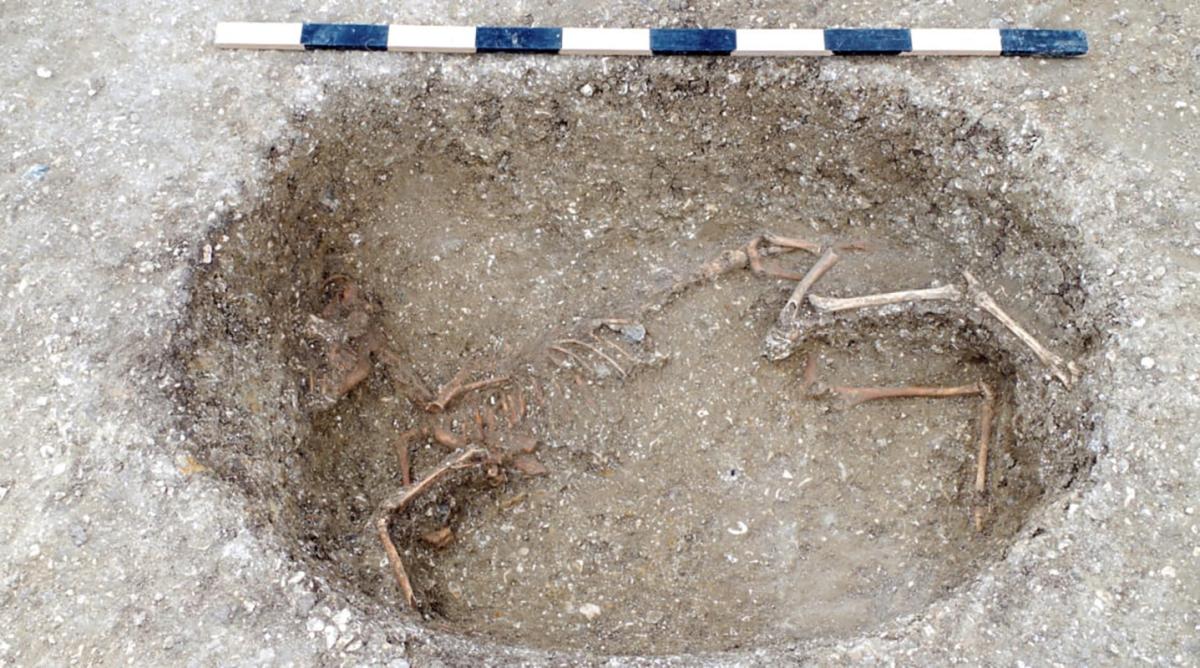
The Romano-British landscape
The site appears to have remained uninhabited after the abandonment of the Late Bronze Age palisaded site and northern settlement.
The site was used largely for agricultural purposes, but we found some evidence of reorganisation in the landscape: during the Romano-British period, for example, a series of trackways were laid out across the site.
Above: Drone image of site, Thomson Ecology
Reconstructing a Bronze Age Roundhouse
Wessex Archaeology has a team of in-house professional artists who specialise in creating both interactive digital and analogue heritage interpretations.
Jono Sutton, a 3D Environment Artist at Wessex Archaeology, created a 3D reconstruction, which brings to life one of the Bronze Age roundhouses found at the site! Using real-life archaeological evidence and in close consultation with our experts, Jono has sensitively visualised what the house would have looked like within its original landscape.
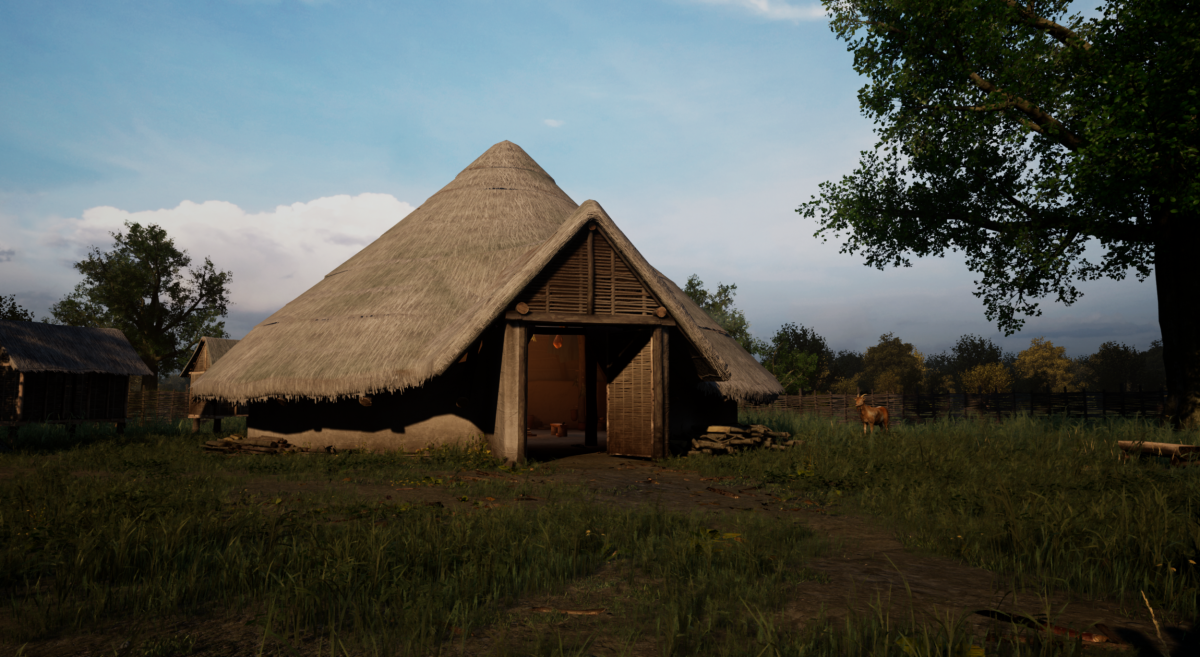
The site has been published in the Wiltshire Archaeological and Natural History Magazine:
Andrew B. Powell and Tom Wells 2020 An unusual Late Bronze Age palisaded site and settlements on land north of Bitham Park, Westbury, Wiltshire, Wiltshire Archaeological and Natural History Magazine 113, 85−129
